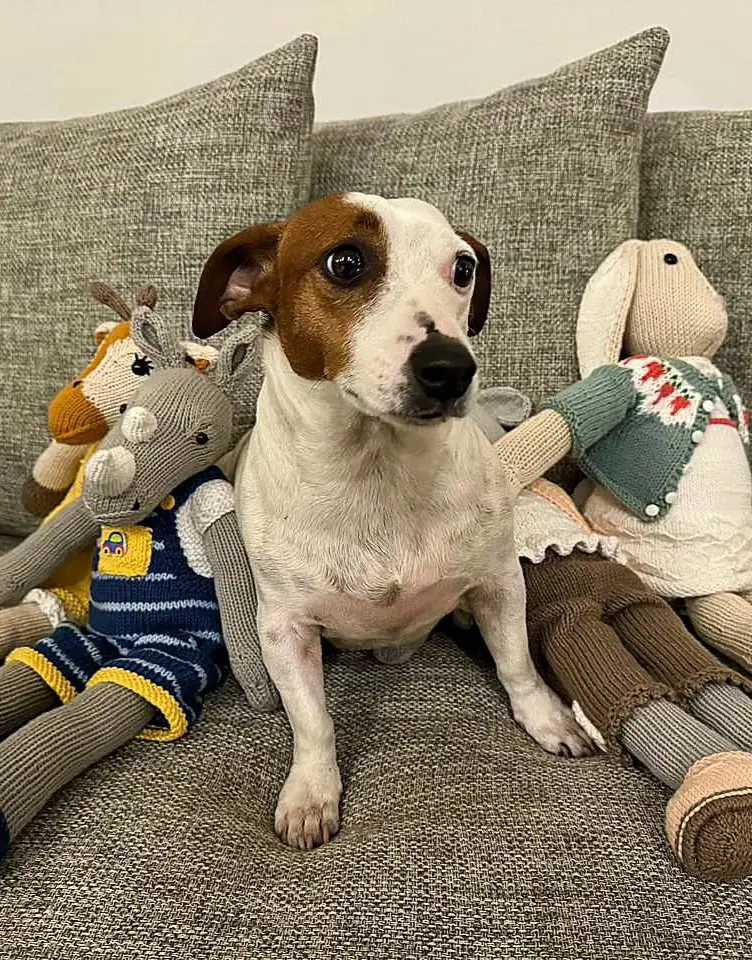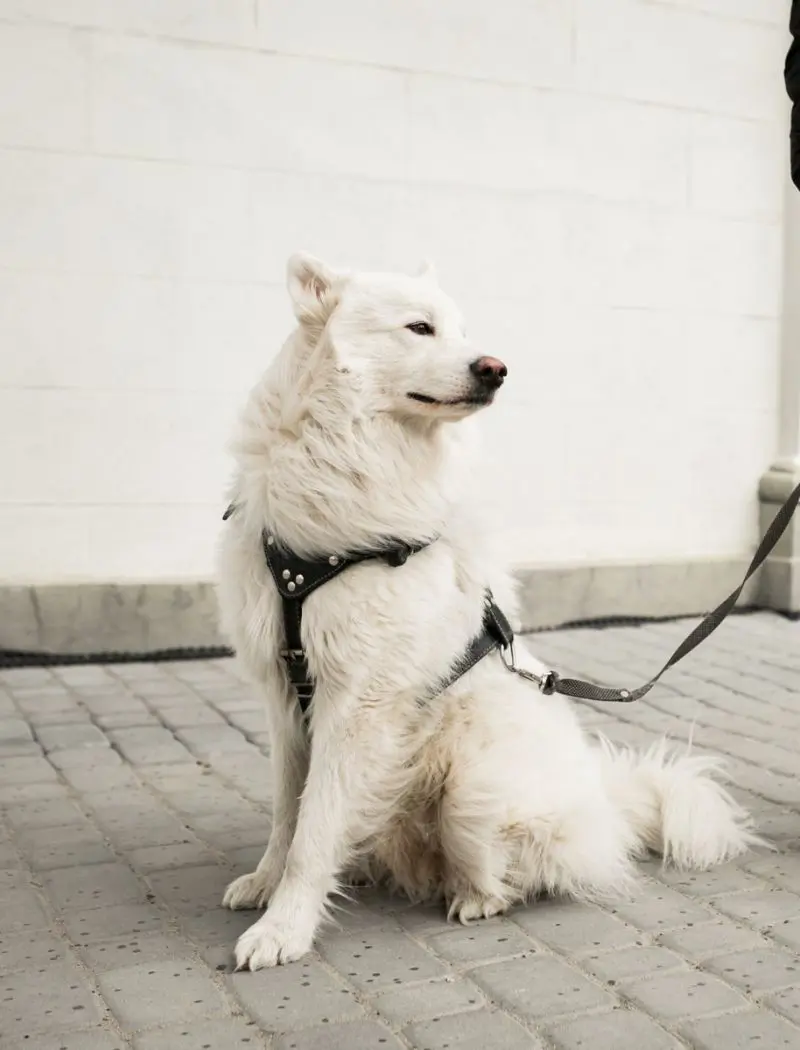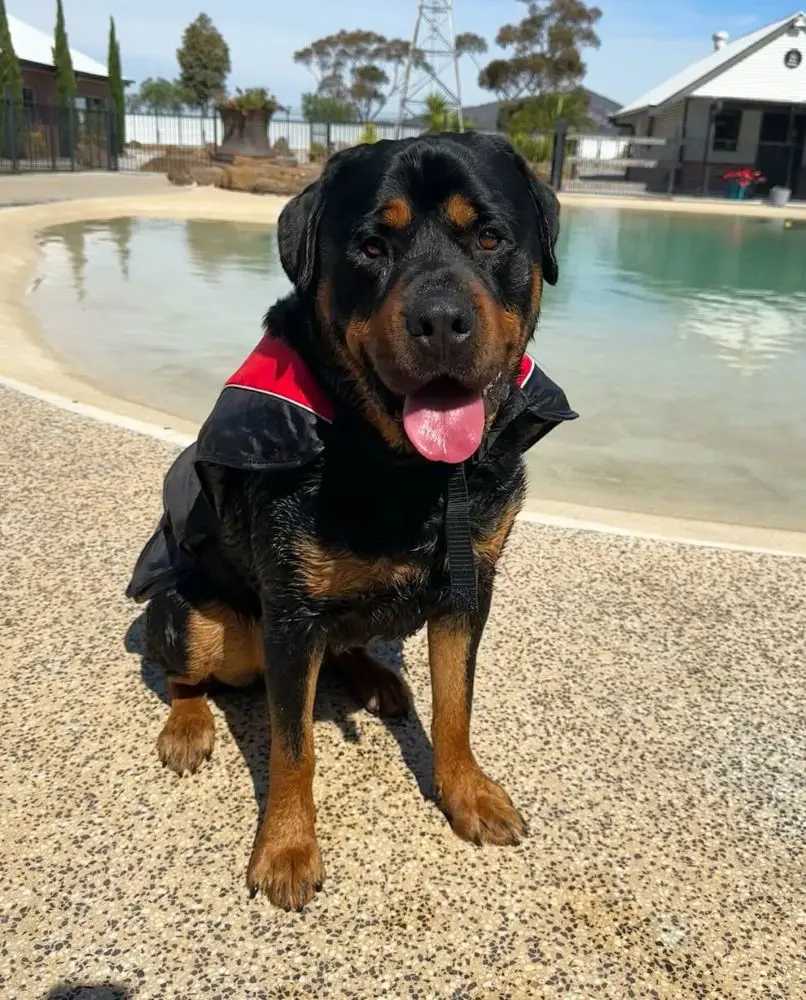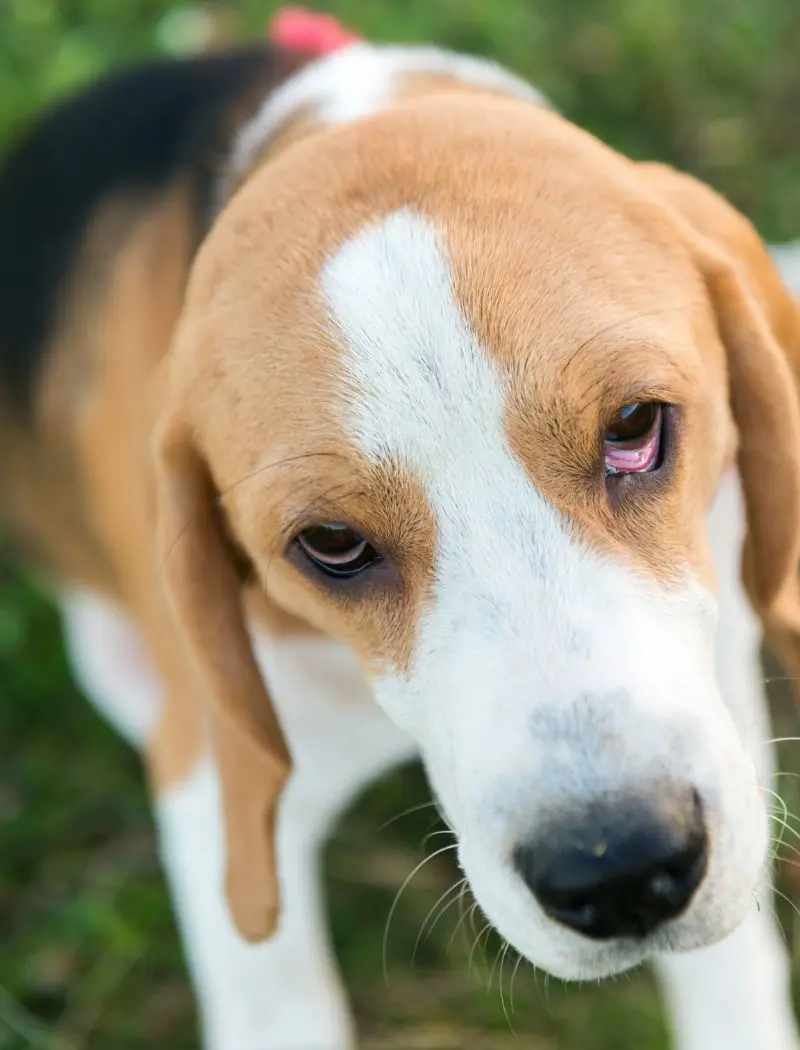What Are Dog Dewclaws And Its Care Tip

The dewclaw is that little almost forgotten thing on the inside of the leg, while they may be minor features, dewclaws have a lot of functions and do require attention. Learning what dewclaws are and how to tend to them will avoid accidents and keep your dog comfortable.
The following guide will explain all that one needs to know about dog dewclaws-from basic care tips to understanding their role in different breeds. Whether your dog is active, a senior, or still a puppy, how to care for a dewclaw is a part of being a responsible owner.
What Are Dog Dewclaws?
A dewclaw consists of the small, extra toes that your dog has on either his front or back legs, placed higher up than his regular paws. The reason most dog owners can understand why dogs possess these appendices is because they do not touch the ground while walking.
While this is not a visible toe to all breeds, it can serve specific purposes to your dog, such as added traction in activities such as running, climbing, and making turns. Dewclaws may exist in breeds and individuals.
But in most cases, they are never active, hence the thought of them being vestigial by some.
Evolutionary Perspective on Dewclaws
These small, thumb-like appendages are a remnant from when the ancestors of dogs required all five toes for survival. Placed in the wild, such ancient canines would most probably rely on their dewclaws in climbing, running, or making sharp turns while chasing.
As such, as the dog adapted to an ever-changing environment to gradually change and evolve with them over time, such extra toes became less necessary. While most dogs today have absolutely no particular need for survival due to dewclaws, neither have they faded away.
The dewclaws of other breeds have become useless over time and can, on occasion especially if they are in a position in which they could easily be injured.
Functions And Anatomy Of Dog Declwas

They are not some sort of simple extra toe just hanging there but have anatomy behind it with its possible function contributing to a dog's physical capacity. Their structure itself shows something about their function.
Bone and Muscle Connection
The bones and muscles connect the dewclaws to the dog's leg, just like the other toes. This connection in some breeds of dogs, especially the ones that have active lifestyles, gives that extra stability and hold that helps them during quick movements.
The muscles associated with the dewclaws allow slight mobility, which can prove vital during events such as climbing or holding. In many dogs, though, the structure of the bones is less developed; hence the dewclaws are rather passive.
Differences between Front and Rear Dewclaws
Whereas front dewclaws are common and can be more functional, some breeds also have rear dewclaws. Normally less developed compared to the front, these may even lack bone or musculature structure altogether.
Some may be attached by mere skin, which in turn makes them even more prone to injury. The great divide between front and rear dewclaws mostly becomes a question of their care, for the rear ones will more often require more attention to prevent problems from arising.
Dewclaws across Breeds
The Dewclaw structure is not exactly uniform across breeds. For instance, the Great Pyrenees belong to that breed with a double dewclaw in the hind legs real feature if one considers breed standards. Some may have front dewclaws only, while others do not have them at all.
History and trends in some instances will relate to a breed due to a specific use or performance that involves additional grip or climbing. Variations in nature among different breeds can be quite helpful when carrying out dewclaw care.
Possible Complications and Advantages
Even though dewclaws may be helpful in certain kinds of performances or activities, they also pose some problems when not taken care of. Ingrown and uncut dewclaws are so prone to being caught on things thus causing painful harm. But then again, when properly kept, the dewclaws would serve as an asset in the dog's dexterity and grasping action.
For this reason, regular checking and trimming are necessary to avoid problems, particularly in dogs that lead an active life or work in rough environments.
Dewclaw Problems and How to Recognize Them

Keeping an eye on your dog's dewclaws will prevent serious problems from arising, the earlier these are treated the more comfortable your dog is going to stay, and the less pain he is going to experience.
Signs of Trouble
One of the symptoms that could be present when the dewclaw is problematic is if the affected dog shows excessive licking or biting of the area. This often implies some sort of discomfort or pain.
The other signs are redness and swelling in the area around the dewclaw, which can indicate infection or some sort of trauma. In such a case, if your pet begins to limp or refuses to put weight on a given paw, then you shall have a reason to check his dewclaws for kinds of injuries.
By so doing, you are in a position to identify symptoms earlier, and timely action is taken that may not make small problems serious.
Common Dewclaw Issues
There are instances when the growth of dewclaws exceeds an uncalled-for limit. This occurs when the dewclaws elongate over and curve inwards into the skin, thus causing pain and probable infection.
The claw can grow back into the pad making it painful for them. Infections sometimes start from injuries or poor grooming; the redness and swelling may be accompanied by pus.
Knowledge of these few common problems helps a person take precautionary measures, such as regularly trimming the nails and checking on the dewclaws for any kind of oddity.
When to See the Vet
If there are any signs of infection-continuing redness, swelling, or oozing-it is time to see the vet, if everything else fails and the dewclaw is very overgrown or close to being ingrown, a veterinarian will be able to perform the needed procedures.
Your regular visits to the vet can look into your dog's dewclaws to ensure they are in good condition to prevent serious problems.
Preventing Dewclaw Problems
The fact that dewclaw problems can be prevented through regular grooming is really important. Toenails on your dog and keeping the surrounding area clean will also lower the risk of overgrowth and infection.
It is also easy to check for possible problems early enough in the dewclaws of your dog during regular grooming sessions. This will not only prevent a lot of discomfort but also keep his or her dewclaws in the right condition to add to his or her general well-being and happiness.
Dewclaw Care in Puppies
The dewclaws of the puppy need very gentle care to grow healthily, early handling of a puppy's paws, even those with dewclaws, has a huge effect on getting them accustomed to grooming. Regular checks, while your dog is still a puppy, will find out if there are possibilities for overgrowth or abnormal attachment.
Immediately after the dewclaws start to grow in, begin the trimming process with small and delicate tools suited for puppies. A set schedule like this prevents overgrowth and possible injury, setting him up for life with healthy dewclaws.
The earlier you get your puppy used to paw handling, the easier this makes for future grooming, without stress.
How to Trim Dog Dewclaws Safely

Very few people would enjoy the very thought of trimming the dewclaws; it sounds daunting. It is, however, quite simple if done right. Here is how this should be done, effectively and safely.
Tools You'll Need
First, you will be requiring a few vital tools to trim your dog's dewclaws. You will need nail clippers or a grinder for the dog, styptic powder in case of an accident causing bleeding, and you should have a towel for comfort.
Clippers must not be dull because using a dull clipper would just result in crushing the nail. This will make the experience quite smooth, reducing chances of hurting your dog painless and non-traumatic.
Steps to Follow
Cut in very small pieces at a time, cutting across rather than down to avoid splitting. If the dewclaw is light in color, you may be able to see the quick. Be careful not to cut too close to it. If the nails are dark, you can cut small bits and progress more often to avoid hitting them quickly.
If your dog becomes nervous or stressed, take breaks. Patience is what makes everything right between you and your dog.
What If You Cut the Quick
If you cut the quick it will bleed and therefore become irritated. If this is the case, do not fret just dab some styptic powder on it to help stop the bleeding process. Give your four-legged friend a treat right after that so it can relate the experience to something positive.
If after a few minutes, it hasn't stopped, then it's time to see your vet. You surely will not hit the quick next time you do it, with regular trims and observing well, and with time, things will go quite easily.
When to Seek Professional Help
In case there is any doubt about trimming dewclaws, or if your dog happens to be fairly nervous, look for a professional. Trimming of nails is done skillfully by groomers and veterinarians and often within a very short time, suppose within minutes.
They also tend to be a source of great information on dewclaw management that one can execute at home. Taking him to the professionals will ensure that he keeps his dewclaws but, in return, prevents him from any situations that can give him stress or lead to pain.
The health and comfort of your pet are greatly essential.
The Influence Of Diet On Dewclaw Health
Lack of such nutrition may weaken the nails and make them more susceptible to different types of dewclaw traumas or infections. Healthier dewclaws are secured in the balance of nutrients in your dog's diet.
Supplements will be needed for dogs in cases of specific deficiencies, especially when their nutrition does not provide adequate levels to enhance nail growth. It is best to lay out a diet plan if one consults a veterinarian regularly to keep up with your dog's nail health and avoid common dewclaw problems relating to food.
Good nutrition does play a great role in helping your dog have healthy and strong dewclaws, contributing generally to the well-being of the dog. With proper nutrition, the dewclaws of your dog will be less likely to fall prey to possible problems.
Dewclaws in Large vs. Small Dog Breeds
Large breeds have better-developed dewclaws, offering better capacity to provide extra grip when dogs round a corner or make abrupt stops. These dewclaws are tougher and might need more frequent care against overgrowth or injury.
While larger breeds have rather small dewclaws, the smaller breeds have them comparatively larger, they perform almost no role in their daily life. In comparison with those of the large breeds, the dewclaws of the smaller breeds can be much more brittle, requiring that they be cut with some tender care to stay free from any kind of pain.
The chances of injuring a torn or broken dewclaw are rather different between the larger and smaller breeds since the larger ones tend to put much pressure on them.
Dewclaws On The Rear In Certain Breeds
Certain breeds, such as Great Pyrenees and Briard, have dewclaws in the rear as part of breed characteristics. These dewclaws are usually double and supposedly aid in performance. In the Great Pyrenees, dewclaws give stability and traction in negotiating rough terrain.
To the Briard, they are a breed characteristic and supposedly help in locomotion. These rear dewclaws require constant checking and trimming because, with their position, they are very much exposed to overgrowth.
Knowing their purpose in certain breeds aids the proper practice of care to serve the needs of the dog.
Lifespan of Dewclaws in Dogs

Those are found in dogs that will remain for different periods depending on breed, genetics, and care provided. The dewclaws will stay functional and healthy for a lifetime and need only infrequent, normal care such as trimming and monitoring.
In other instances, with those dewclaw injuries or infections, for example, the life span of a dewclaw could be decidedly less. To the extent that it becomes a recurring problem in such instances, the dewclaw needs to be surgically removed.
The knowledge regarding different factors affecting the life of dewclaws will then enable the owner to at least take some positive steps toward dewclaw maintenance in its healthy and working state for the longest time possible.
Recent posts
Dogs
What Are Dogs Afraid Of? 10 Common Dog Fears And Phobias
Becoming a dog owner comes with certain responsibilities, including identifying their fears and phobias. From an unpleasant sound to an unfamiliar scent, many factors can trigger a fear response. Understanding a dog's psychology can be complicated; a...
How To Put A Dog Harness On: Step By Step
A dog harness is a popular and safe alternative to a neckband that is designed to distribute pressure more equally across the structure while walking or running. They are worn around the chest and torso, making them a comfortable option for many dogs...
15 Webbed Feet Dogs Breeds That Can Swim
Dogs often become excited when they are near a water body like a pool, river, or beach. Unlike cats, canines are not wary of water and are usually seen enjoying their swims at their nearby water hole. However, enthusiasm alone doesn't dictate a dog's...
20 Fun Activities For Dogs During Winter
Winter can be a great time to embrace the chilly season with creative activities that keep your furry friend happy and entertained. They provide a perfect opportunity to explore unique ways to bond with your dog. From snowy outdoor experiences to coz...
How To Introduce Baby To Dog: A Step By Step Guide
Adding a new baby to your home is exciting, but it can also be a big change for your dog. A dog's natural curiosity involves a patient, prepared, and considerate introduction to a newborn baby. A smooth transition is important for the safety of your ...
Do Dogs Cry? What Does Their Tears Mean
Dogs are known to shed tears as a way to lubricate their eyes and not because of sadness or emotional pain like humans. Tears in dogs may indicate medical issues like eye infections or blocked tear ducts that may cause discomfort to them. It is very ...





